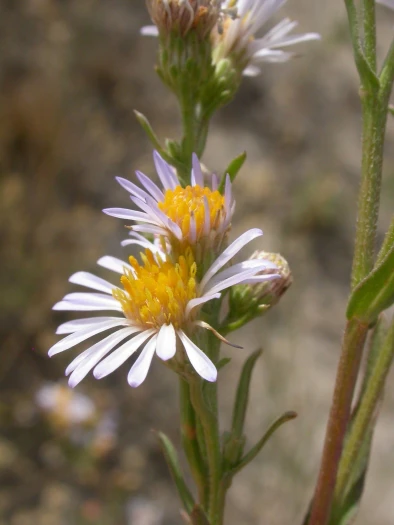Eaton’s Aster
(Symphyotrichum bracteolatum)
Eaton’s Aster (Symphyotrichum bracteolatum)
/
/

© Matt Lavin
CC BY 4.0
Image By:
© Matt Lavin
Recorded By:
Copyright:
CC BY 4.0
Copyright Notice:
Photo by: © Matt Lavin | License Type: CC BY 4.0 | License URL: http://creativecommons.org/licenses/by/4.0/ | Uploader: mattlavin | Publisher: iNaturalist |










Estimated Native Range
Climate Requirements for Utrecht, Netherlands
| This Plant | Your Site | Plant Suitability for Your Location | ||
|---|---|---|---|---|
| • Precipitation | 5" - 94" | 32" | Your precipitation may be too high for this plant. | Too high |
| • High Temp. | 52°F - 99°F | 73°F | Your summer temperatures are normal for this plant. | Excellent |
| • Low Temp. | -6°F - 38°F | 32°F | Your winter temperatures are normal for this plant | Excellent |
This plant may not grow well at your location - your precipitation is too high.
Summary
Symphyotrichum bracteolatum, commonly known as Eaton’s aster, is a perennial herb that is native to western North America, but it is more accurately found in moist meadows, along streams, and in open forest clearings. Its range includes British Columbia, Saskatchewan, and extends through the western United States to California, the Rocky Mountains, Arizona, and New Mexico. Eaton’s aster typically reaches 1-3 feet in height and has lance-shaped leaves. From late summer to fall, it produces inflorescences with white to pink ray florets surrounding yellow disk florets, which are attractive to pollinators such as butterflies and bees.
Eaton’s aster is valued for its late-season blooms, which provide color when many other flowers have finished blooming. It is used in naturalistic plantings, wildflower gardens, and as a border plant. This aster prefers full sun to part shade, moist but well-drained soils, and is relatively low maintenance. While it is not known for particular diseases, it can be susceptible to powdery mildew in humid conditions. There are no widely recognized cultivars of this species, but its natural form is well-suited to garden use. Gardeners should be aware that, like many asters, it can spread through rhizomes and may require control to prevent it from becoming too aggressive in small garden spaces.CC BY-SA 4.0
Eaton’s aster is valued for its late-season blooms, which provide color when many other flowers have finished blooming. It is used in naturalistic plantings, wildflower gardens, and as a border plant. This aster prefers full sun to part shade, moist but well-drained soils, and is relatively low maintenance. While it is not known for particular diseases, it can be susceptible to powdery mildew in humid conditions. There are no widely recognized cultivars of this species, but its natural form is well-suited to garden use. Gardeners should be aware that, like many asters, it can spread through rhizomes and may require control to prevent it from becoming too aggressive in small garden spaces.CC BY-SA 4.0
Plant Description
- Plant Type: Herb
- Height: 1-3 feet
- Width: 1-2.5 feet
- Growth Rate: Moderate
- Flower Color: Purple, Pink
- Flowering Season: Fall
- Leaf Retention: Deciduous
Growth Requirements
- Sun: Full Sun, Part Shade
- Water: Medium, High
- Drainage: Medium, Fast
Common Uses
Border Plant, Butterfly Garden, Drought Tolerant, Low Maintenance
Natural Habitat
Moist meadows, along streams, and open forest clearings
Other Names
Common Names: Bracteolate Aster, Bracted Aster, Cushion Aster
Scientific Names: Symphyotrichum bracteolatum, Aster bracteolatus, Aster cordalenus, Aster eatonii, Aster foliaceus var. eatonii, Aster mearnsii, Symphyotrichum eatonii
GBIF Accepted Name: Symphyotrichum bracteolatum